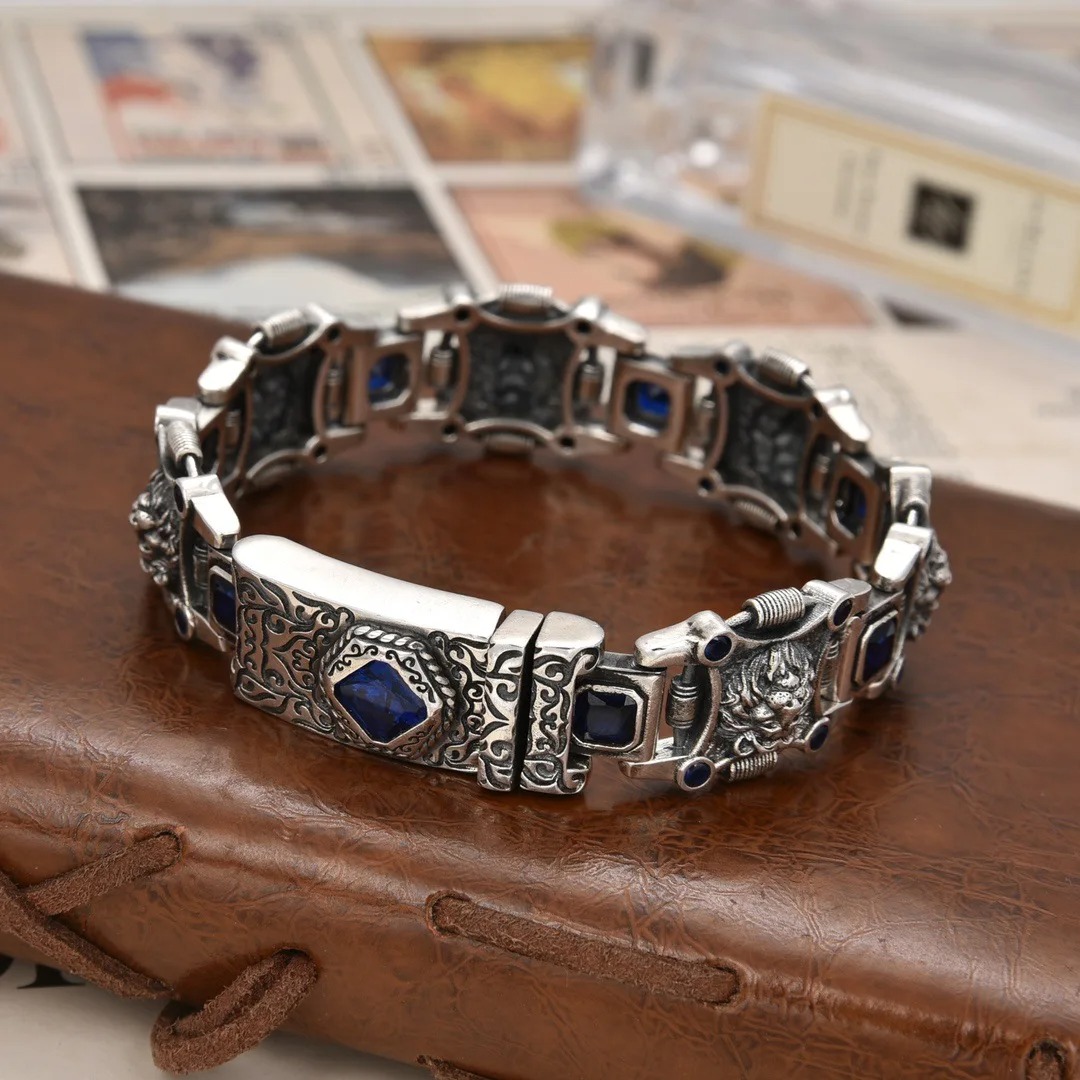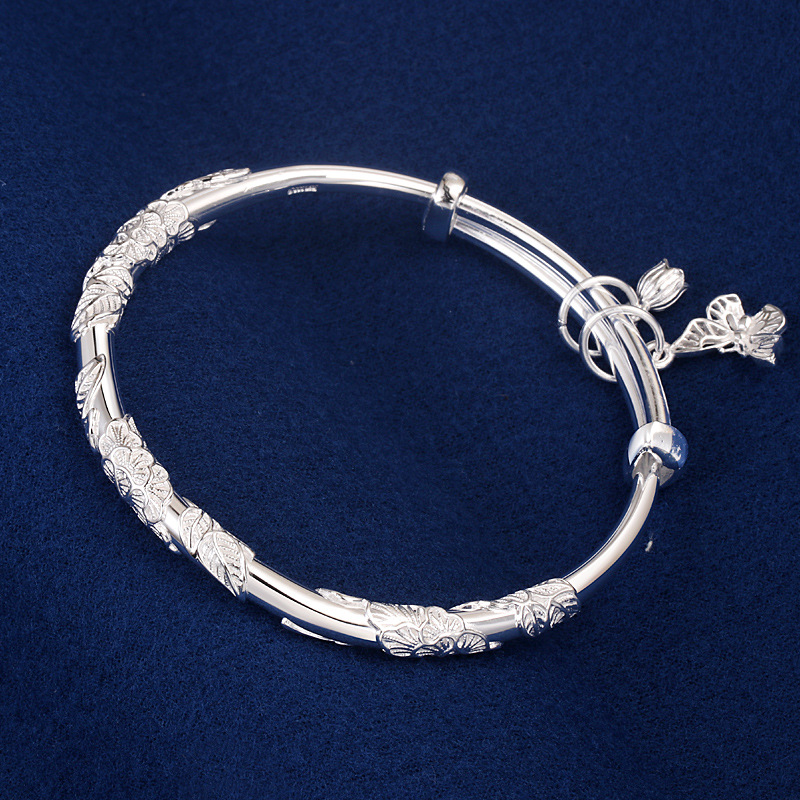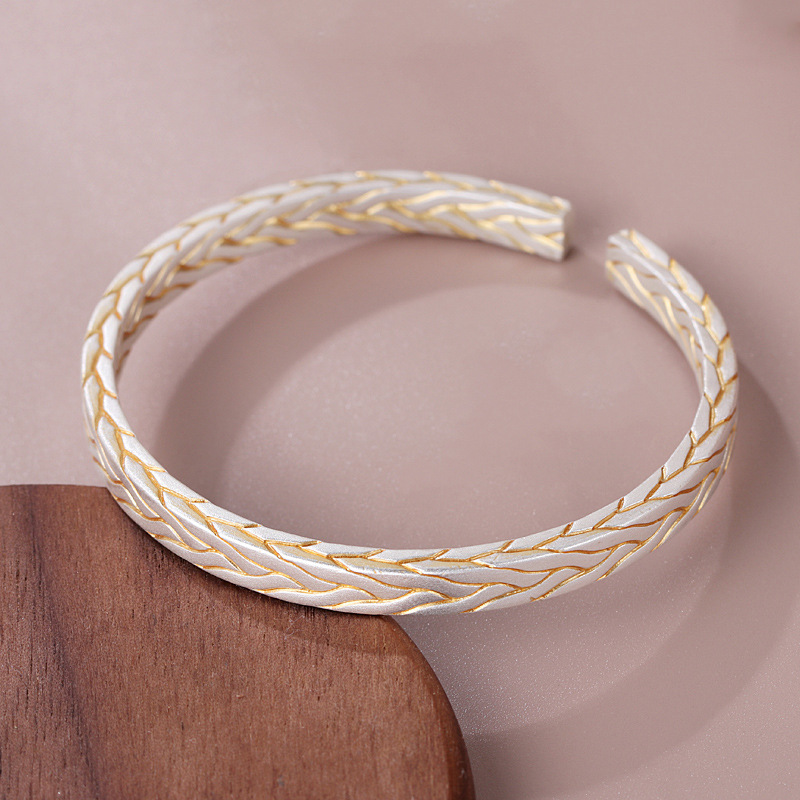The Processing Techniques of 925 Silver Jewelry: The Dialogue between Craftsmen and Metal
In the world of jewelry, 925 silver, with its perfect ratio of silver and copper, has become a “versatile genie” in the hands of designers. It retains the warm luster of silver and gains excellent shaping ability due to the alloy composition. It is those processing techniques that have been passed down for thousands of years and are constantly innovated that transform 925 silver from a cold metal raw material into exquisite jewelry. Each process is a deep dialogue between the craftsman and the metal.

I. Casting Process: The Magical Transformation from Liquid to Solid
The casting process can be regarded as the “basic production line” of 925 silver jewelry, enabling the metal to complete a gorgeous transformation from liquid to solid. First, the craftsman will put the 925 silver raw material into a crucible and heat it. Under the action of high temperature, the silver material gradually melts into a shining silver liquid. This process requires precise control of the temperature, as both too high and too low temperatures will affect the quality of the silver liquid.
Then, the melted silver liquid will be quickly poured into a pre-made mold. The mold materials are diverse, and common ones include plaster molds, rubber molds, and metal molds. Plaster molds are suitable for making more complex shapes and can present delicate textures; rubber molds are often used for mass production of some regularly shaped small accessories, such as earrings and pendants; metal molds are highly durable and suitable for making jewelry with high precision requirements.
After the silver liquid cools and solidifies in the mold, when the mold is opened, the initially formed jewelry will be presented in front of us. However, at this time, the jewelry is still a bit rough and needs subsequent treatments such as grinding and polishing to shine with a charming luster. The casting process allows 925 silver to achieve standardized and large-scale production. Most of the simple silver rings and necklaces we wear daily are made through this process.

II. Forging Process: Artistic Creation under Hammering
Different from the casting process, the forging process is more like a passionate artistic creation. The craftsman holds a hammer and repeatedly hammers the silver material. Each strike has a unique rhythm and force. With continuous hammering, the silver material gradually becomes thinner and extends, taking on the desired shape.
During this process, the craftsman not only needs to control the force and angle but also adjust the technique in a timely manner according to the change of the silver material. For example, if you want to make a wavy silver bracelet, you need to create undulating lines through hammering in different directions and with different forces. In addition to simple hammering, the craftsman will also combine techniques such as bending and twisting to give the silver material more morphological changes.
After forging is completed, natural hammer marks will be left on the surface of the jewelry. These irregular lines are the unique marks of hand forging, making each piece unique. Under the illumination of the light, the hammer marks shimmer with a charming luster, as if telling the concentration and perseverance of the craftsman. Some 925 silver jewelry with a retro style and emphasizing texture often uses the forging process, bringing a unique charm to the wearer.

III. Inlaying Process: The Romantic Encounter between Gemstones and Silver
The inlaying process enables 925 silver jewelry to achieve a perfect combination with gemstones, starting a romantic encounter. Prong setting is one of the most common inlaying methods, which fixes the gemstone on the silver base with metal prongs. The number and shape of the prongs are diverse. Four-prong and six-prong settings can make the gemstone present a classic round or square appearance, while the unique two-prong design is more modern and can make the gemstone look more agile.
Bezel setting is to wrap the gemstone with a metal edge all around. This inlaying method is firm and can protect the gemstone, making it suitable for some irregularly shaped or precious gemstones. It makes the gemstone closely fit the silver base, with a simple and elegant overall shape, giving people a stable and reserved feeling.
There is also channel setting, in which gemstones are arranged in a metal channel, and the metal channel plays the role of fixing and supporting. This inlaying method can show the continuity and integrity of the gemstones and is often used in making bracelets, necklaces, and other jewelry. Under the light, the gemstones and the silver base shine together, emitting a dazzling light. The inlaying process makes 925 silver jewelry no longer monotonous, endowing it with more colors and a sense of hierarchy, meeting people’s diverse pursuit of beauty.
IV. Enamel Process: The Gorgeous Blending of Color and Silver
The enamel process injects a riot of colors into 925 silver jewelry, making the metal radiate new vitality. First, the craftsman will draw or carve patterns or grooves for filling enamel on the surface of 925 silver. These patterns may be exquisite flowers, agile animals, or artistic geometric shapes.
Then, fill the corresponding areas with enamel glaze ground into fine powder. The colors of the enamel glaze are rich and diverse, ranging from bright red and blue to soft pink and green. After filling is completed, the jewelry will be put into a high-temperature furnace for firing. Under the action of high temperature, the enamel glaze gradually melts and closely combines with the silver surface, forming a smooth and brightly colored enamel surface.
The firing process requires strict control of the temperature and time. If the temperature is too high or the time is too long, the enamel glaze may change color or fall off; if the temperature is too low or the time is too short, the desired effect cannot be achieved. After multiple firings and polishings, a piece of enamel 925 silver jewelry with gorgeous colors and unique features is born. The enamel process makes 925 silver jewelry full of artistic flavor and can easily handle both a retro style and a fashionable style.
Each processing technique of 925 silver jewelry embodies the wisdom and painstaking efforts of the craftsman. They endow the silver jewelry with unique charm and vitality, so that when we wear the jewelry, we can not only feel the beauty but also touch the warmth behind the technique. The next time you pick up a piece of 925 silver jewelry, you might as well savor its beauty of craftsmanship carefully and feel the wonderful process of the dialogue between the craftsman and the metal.
Women’s Sterling Silver Bracelet
Women’s Sterling Silver Bangle